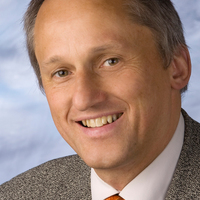
WaiChing Sun
My researches focus on theoretical and numerical aspects of multi-physical coupled mechanical processes across different length scales, with particular emphasis on fundamental understanding on mechanisms that lead to strain localization and diffusive failure in geological systems and their related applications in geotechnical earthquake engineering and energy related applications. An innovative contribution of my work is the establishment of new coupling methodology to analyze complex geomechanical system with multiple physics (e.g. diffusion/deformation/heat transfer), and numerical tools (e.g. lattice Boltzmann, discrete element method, finite element method) in a mathematically consistent fashion.
Phone: 212-851-4371
Address: 614 SW Mudd, Mail Code: 4709
Phone: 212-851-4371
Address: 614 SW Mudd, Mail Code: 4709
less
Related Authors
Yousef Heider
RWTH Aachen University
John Wettlaufer
Yale University
Günther Meschke
Ruhr-Universität Bochum
Paulo J.M. Monteiro
University of California, Berkeley
InterestsView All (38)





Uploads
Papers by WaiChing Sun
mechanical behavior of granular materials. In the proposed multiscale scheme, we establish an informationpassing
coupling between the discrete element method, which explicitly replicates granular motion of
individual particles, and a finite element continuum model, which captures nonlocal overall responses of
the granular assemblies. The resulting multiscale discrete-continuum coupling method retains the simplicity
and efficiency of a continuum-based finite element model, while circumventing mesh pathology in the postbifurcation
regime by means of staggered nonlocal operator. We demonstrate that the multiscale coupling
scheme is able to capture the plastic dilatancy and pressure-sensitive frictional responses commonly observed
inside dilatant shear bands, without employing a phenomenological plasticity model at a macroscopic level.
In addition, internal variables, such as plastic dilatancy and plastic flow direction, are now inferred directly
from granular physics, without introducing unnecessary empirical relations and phenomenology. The simple
shear and the biaxial compression tests are used to analyze the onset and evolution of shear bands in granular
materials and sensitivity to mesh density. The robustness and the accuracy of the proposed multiscale model
are verified in comparisons with single-scale benchmark discrete element method simulations.
mechanical behavior of granular materials. In the proposed multiscale scheme, we establish an informationpassing
coupling between the discrete element method, which explicitly replicates granular motion of
individual particles, and a finite element continuum model, which captures nonlocal overall responses of
the granular assemblies. The resulting multiscale discrete-continuum coupling method retains the simplicity
and efficiency of a continuum-based finite element model, while circumventing mesh pathology in the postbifurcation
regime by means of staggered nonlocal operator. We demonstrate that the multiscale coupling
scheme is able to capture the plastic dilatancy and pressure-sensitive frictional responses commonly observed
inside dilatant shear bands, without employing a phenomenological plasticity model at a macroscopic level.
In addition, internal variables, such as plastic dilatancy and plastic flow direction, are now inferred directly
from granular physics, without introducing unnecessary empirical relations and phenomenology. The simple
shear and the biaxial compression tests are used to analyze the onset and evolution of shear bands in granular
materials and sensitivity to mesh density. The robustness and the accuracy of the proposed multiscale model
are verified in comparisons with single-scale benchmark discrete element method simulations.
Method: The calculation of effective permeability involves three steps. First, the topology of the isolated pore space is captured via a level set evolution scheme (Chunming, Li, et al., IEEE, 2005). The key idea is to obtain the signed distance function and use it to separate the micro-channel from the isolated pore space. As pore-fiuid trapped inside the pore space remains undrained, size of the pore-scale LB simulation can be reduced by neglecting the discrete distribution function inside the isolated pore space. Furthermore, by knowing the topology of the isolated pore space, we eliminate any chance of mistaking an isolated pore space as a flow channel in a representative elementary volume and hence enhance the accuracy of the permeability calculation. Secondly, LB simulation is conducted in a representative elementary volume to compute local permeability. Finally, permeability acquired from the pore-scale LB simulation is extracted as input for the macro-scale Darcy's flow problem solved via finite element. Components of the macroscopic effective permeability tensor are then inversely computed from the known homogenized Darcy's velocity and pressure fields.
Result: LB simulations and LB/FEM hybrid simulations are both run on images reconstructed from Aztec sandstone specimens inside and outside a field compaction band. The effective permeability computed via both simulations are in agreement. Although the difference on porosity inside/outside compaction band is only about 5%, we observe a dramatic difference on permeability inside/outside compaction band. This change is nevertheless consistent with the increase of proportion of isolated pore space inside the compaction band.
Conclusion: We propose a multi-scale framework to capture the permeability of a field compaction band. Unlike the pore space numerically constructed by randomly distributed disk, real pore space inside field compaction band is narrower and less interconnected. This feature severely limited the number of possible paths pore-fluid can travel in and therefore makes the isolated pore space significant on permeability calculations.